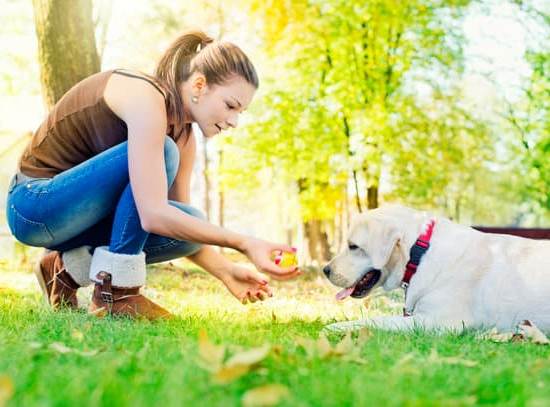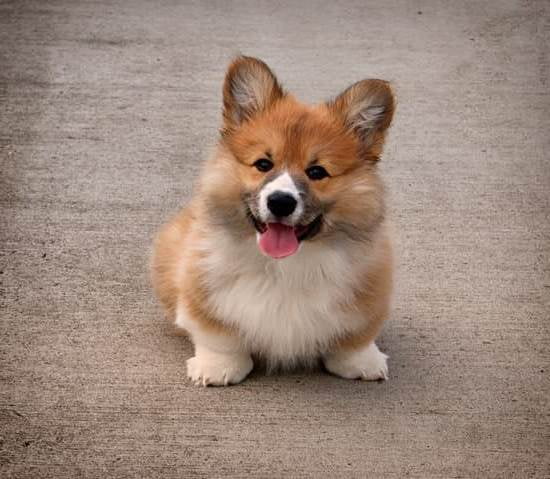Training outside dogs comes with its own set of challenges and considerations. Understanding the unique needs of these outdoor pets is crucial in ensuring their well-being and obedience. In this article, we will explore how to train outside dogs, from creating a comfortable space for training to dealing with environmental factors and distractions.
Creating a comfortable and safe outdoor space for training is essential when it comes to training outside dogs. This includes providing shelter from the elements, an area for exercise, and secure boundaries to prevent wandering. Understanding the specific needs of your dog’s breed and size is also important in designing an outdoor space that meets their requirements.
Essential commands for outside dogs differ from those needed for indoor pets. Teaching commands that keep them safe, such as “stay” and “come,” is vital in helping them navigate their outdoor environment. Positive reinforcement training methods can be effective in teaching these commands and fostering good behavior in outside dogs.
Socialization plays a key role in an outside dog’s training journey. Tips for socializing outside dogs will be discussed, as well as ways to deal with common challenges that arise during this process. Additionally, managing distractions and environmental factors such as wildlife or weather will also be covered.
As we dive into understanding the unique needs of outside dogs, it’s important to remember that consistency and patience are essential in successfully training these pets. By implementing the tips and techniques outlined in this article, you can ensure that your outside dog receives the proper training needed for a happy and fulfilling life outdoors.
Creating a Comfortable and Safe Outdoor Space for Training
When training outside dogs, it’s important to create a comfortable and safe environment for them to learn and thrive in. Here are some tips for creating the perfect outdoor space for training:
- Provide adequate shelter: Ensure that your outside dog has a comfortable and secure shelter to protect them from the elements. This could be a well-insulated dog house or a covered area where they can seek refuge during extreme weather conditions.
- Secure the area: Make sure that the outdoor training area is securely fenced to prevent your dog from wandering off or getting into any dangerous situations. Check regularly for any potential escape routes or weak spots in the fencing.
- Provide access to water: It’s crucial to have fresh, clean water readily available for your outside dog, especially during hot weather. Consider investing in an automatic water dispenser to ensure that they stay hydrated throughout their training sessions.
- Create a designated potty area: If you’re trying to house train your outside dog, designate a specific area of the outdoor space for them to do their business. Use positive reinforcement and rewards when they use this area appropriately.
By providing a comfortable and safe outdoor space for training, you’re setting up your outside dog for success and creating a conducive environment for effective learning and behavior modification.
Essential Commands for Outside Dogs
Training outside dogs comes with its own set of challenges, but with the right commands and training methods, it is possible to have a well-behaved and obedient dog even in an outdoor setting. Here are some essential commands that are important to teach your outside dog:
- Sit: Teaching your dog to sit on command is one of the most basic and useful commands. It can be used to calm them down or keep them from jumping on people.
- Stay: This command is vital for the safety of your outside dog. It can prevent them from running into the street or getting into dangerous situations.
- Come: Teaching your dog to come when called is crucial for their safety. Whether they’re chasing a squirrel or running away from something scary, having a reliable recall command can help prevent accidents.
When teaching these commands, it’s important to use positive reinforcement training methods. This means rewarding your dog with treats, praise, or toys when they obey a command. Additionally, consistency and patience are key when training outside dogs.
Remember that each dog is different, so some may take longer to learn certain commands than others. Keep training sessions short and fun to maintain your dog’s interest and always end on a positive note, even if progress feels slow.
Incorporating these essential commands into your outside dog’s training routine can help create a safe and enjoyable environment for both you and your pet. With time, practice, and plenty of patience, you’ll see the benefits of a well-trained outside dog.
Using Positive Reinforcement Training Methods
What Is Positive Reinforcement Training?
Positive reinforcement training involves rewarding your dog for good behavior rather than punishing them for bad behavior. This method focuses on using rewards such as treats, praise, and toys to encourage the dog to repeat the desired behavior. The idea is to create a positive association with the behavior, making it more likely that the dog will continue to perform that action in the future.
Applying Positive Reinforcement to Outside Dog Training
When training outside dogs, positive reinforcement can be an effective method for teaching essential commands and addressing behavioral issues. For example, when teaching your outside dog to come when called, reward them with a treat or verbal praise every time they respond to your command. This will help them associate coming when called with a positive outcome and increase the likelihood of them obeying this command in the future.
The Benefits of Positive Reinforcement
Using positive reinforcement training methods with outside dogs can help build trust and strengthen your bond with your pet. It also promotes a happy and stress-free learning environment for your dog. By focusing on rewarding good behavior rather than punishing bad behavior, you can create a positive and enjoyable training experience for both you and your canine companion.
Tips for Socializing Outside Dogs
Introduction to Socializing Outside Dogs
Socializing outside dogs is an important aspect of their training and overall well-being. While inside dogs have more opportunities to interact with different people, animals, and environments, outside dogs may need more intentional socialization to ensure they can comfortably navigate various situations. Proper socialization can help prevent fear, anxiety, and aggression in outside dogs, making them better companions and neighbors.
Gradual Exposure to Different Environments
When socializing outside dogs, it’s essential to introduce them gradually to different environments. Start with quiet and familiar areas before gradually exposing them to busier parks and streets. This gradual approach can help prevent overwhelming the dog and build their confidence in unfamiliar settings.
Positive Interactions With Other Animals and People
Encourage positive interactions with other animals and people during socialization. Arrange playdates with other friendly dogs or introduce your dog to different individuals, always monitoring their behavior for signs of stress or discomfort. Positive interactions can help your dog develop strong social skills and become more comfortable in various social settings.
By following these tips for socializing outside dogs, you can help your furry friend become a well-adjusted and friendly companion both at home and in public spaces. Remember that every dog is unique, so be patient and consistent as you work on their socialization training.
Dealing With Distractions and Environmental Factors
Training outside dogs comes with its own set of challenges, one of the most significant being distractions and environmental factors. Whether it’s other animals, loud noises, or enticing scents, these distractions can make it difficult for your dog to focus on training. However, there are strategies you can use to help your dog overcome these obstacles and stay focused during training sessions.
One effective way to deal with distractions is to gradually expose your dog to them in a controlled environment. Start by incorporating mild distractions into your training sessions, such as low-level noises or gentle movements. As your dog becomes more comfortable and less reactive to these distractions, gradually increase the level of difficulty. This gradual approach will help your dog build up a tolerance to distractions and become better able to focus even in challenging environments.
Environmental factors such as weather conditions and outdoor stimuli also play a role in outside dog training. It’s essential to take these factors into account when planning your training sessions. For example, extreme heat or cold can be uncomfortable for dogs and affect their ability to concentrate.
Similarly, certain outdoor environments may be more stimulating or anxiety-inducing for some dogs. By being mindful of these factors and adjusting your training methods accordingly, you can create a more conducive learning environment for your outside dog.
| Dealing With Distractions | Environmental Factors |
|---|---|
| Gradually expose the dog to distractions | Consider weather conditions during training |
| Use positive reinforcement during exposure | Adjust training based on outdoor stimuli |
Proper Exercise and Mental Stimulation for Outside Dogs
Outdoor dogs require ample physical exercise to keep them healthy and prevent behavior problems. Depending on the breed and age of your dog, they may need anywhere from 30 minutes to two hours of exercise per day. This can be in the form of walks, runs, or playtime in a securely fenced yard. Mental stimulation is just as important as physical exercise for outside dogs. Interactive toys, puzzle feeders, and obedience training can keep their minds engaged and prevent boredom.
One way to provide mental stimulation for outside dogs is through scent work or nose work. Training your dog to search for hidden treats or objects in the yard can provide both mental and physical exercise.
Another option is providing your dog with food puzzles or interactive toys that require them to problem-solve in order to obtain a reward. Mental stimulation not only prevents behavioral issues like digging and excessive barking but also helps develop a strong bond between you and your outdoor dog.
For outdoor dogs who enjoy social interaction with other dogs, consider setting up playdates with other friendly, vaccinated dogs in the neighborhood. This can provide mental stimulation through socialization as well as physical exercise through playtime. Moreover, if possible, take your dog on safe off-leash hikes or visits to the beach or park where they can explore new sights, smells, and experiences while getting their daily dose of exercise.
| Exercise | Mental Stimulation |
|---|---|
| 30 minutes to two hours of physical activity per day | Scent work/nose work, interactive toys, puzzle feeders |
| Socialization through playdates and off-leash hikes | Food puzzles, problem-solving toys |
Troubleshooting Common Challenges When Training Outside Dogs
Training outside dogs can present its own set of challenges. One common issue that many owners face is dealing with distractions and environmental factors. With the great outdoors comes a whole host of distractions, from squirrels and other animals to neighbors and outdoor noises.
When training your outside dog, it’s important to start in a quiet and controlled environment before gradually increasing the level of distraction. This will help your dog learn to focus and follow commands even when there are distractions present.
Another common challenge when training outside dogs is weather-related issues. Whether it’s extreme heat, rain, or snow, the weather can greatly impact training sessions. It’s important to consider the weather conditions and adjust training accordingly. For example, consider investing in a shade structure or an outdoor heater for extreme temperatures so that you can continue training in a comfortable environment for your dog.
Additionally, territorial behavior can also be a challenge when training outside dogs. Dogs that are used to being in an outdoor space may become protective of their territory, making it more difficult for them to focus on training.
It’s important to establish boundaries in your outdoor space and work on desensitizing your dog to people and animals entering their territory. By addressing these common challenges head-on, you can ensure that your outside dog training is successful and enjoyable for both you and your furry friend.
Consistency and Patience
Training a dog to behave well outside requires consistency and patience. Dogs may take longer to learn new behaviors when working in an outdoor environment, and it’s essential for their owners to remain patient throughout the process. By consistently practicing training exercises and establishing a routine, outside dogs can develop good habits over time.
Consistency is crucial when training outside dogs. This means setting clear expectations and boundaries for your dog and sticking to them. For example, if you want your dog to wait at the door before going outside, you must enforce this rule every time they approach the door. Inconsistency can confuse your dog and make it harder for them to understand what is expected of them.
Additionally, patience is key when training outside dogs. It’s important to remember that learning takes time, especially in a distracting outdoor environment. Some dogs may take longer than others to pick up on new commands or behaviors, so it’s important not to get frustrated and remain calm throughout the training process. With patience and consistent practice, your outside dog will eventually learn the desired behaviors and become well-behaved in an outdoor setting.
Resources and Further Reading for Training Outside Dogs
In conclusion, training outside dogs requires a unique approach that takes into consideration their natural environment and needs. By understanding the importance of creating a comfortable and safe outdoor space, using positive reinforcement methods, and providing proper exercise and mental stimulation, owners can successfully train their outside dogs.
It is essential for owners to prioritize consistency and patience when training their outside dogs. This means being dedicated to practicing commands regularly, maintaining a routine, and being patient with any setbacks or challenges that may arise. Additionally, socializing outside dogs and dealing with distractions and environmental factors are crucial aspects of their training that should not be overlooked.
For further reading and resources on training outside dogs, owners can seek out books, online articles, and professional trainers who specialize in working with outdoor pets. It is important to stay informed about the best practices for training outside dogs in order to ensure their well-being and happiness. By continuing to educate themselves on this topic, owners can build a strong foundation for a successful relationship with their outside dogs.
Frequently Asked Questions
How Do You Train a Dog That Has Lived Outside?
Training a dog that has lived outside requires patience, consistency, and positive reinforcement. Start by establishing a reward system using treats or praise to encourage good behavior. Introduce basic commands such as sit, stay, and come in a calm and controlled environment.
Gradually expose the dog to new experiences and environments while reinforcing positive behavior. It may take time for the dog to adjust to living indoors, so be patient and understanding throughout the process.
How Do You Stop a Dog From Peeing and Pooping in the House?
When trying to stop a dog from peeing and pooping in the house, it’s important to first rule out any medical issues by consulting a veterinarian. Once any health concerns are addressed, focus on establishing a routine for bathroom breaks and being consistent with meal times.
Supervise the dog closely indoors and redirect them to go outside if they show signs of needing to relieve themselves. Using positive reinforcement when they go outside can also help reinforce this desired behavior.
How Do I Train My Dog to Listen Outside?
Training a dog to listen outside requires building a strong foundation of obedience commands in various environments. Start training in an area with minimal distractions and gradually progress to more challenging settings. Use high-value treats or rewards as motivation for the dog to listen and respond properly outside.
Practice recall commands in safe outdoor spaces while gradually introducing distractions like other animals or people. Consistency, patience, and positive reinforcement are key components of successful outdoor obedience training for dogs.

Welcome to the blog! I am a professional dog trainer and have been working with dogs for many years. In this blog, I will be discussing various topics related to dog training, including tips, tricks, and advice. I hope you find this information helpful and informative. Thanks for reading!





